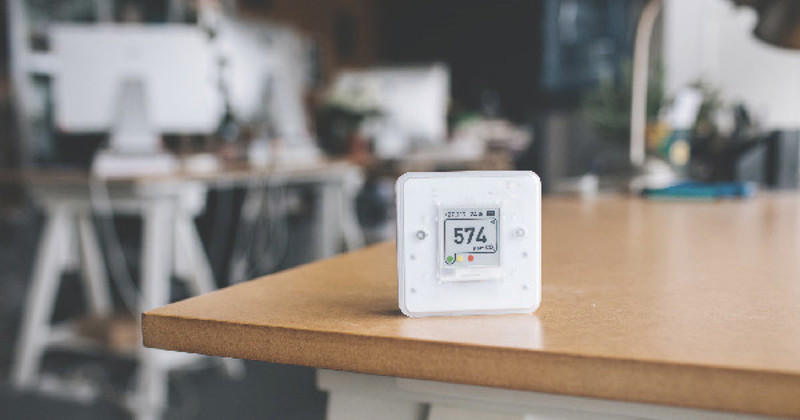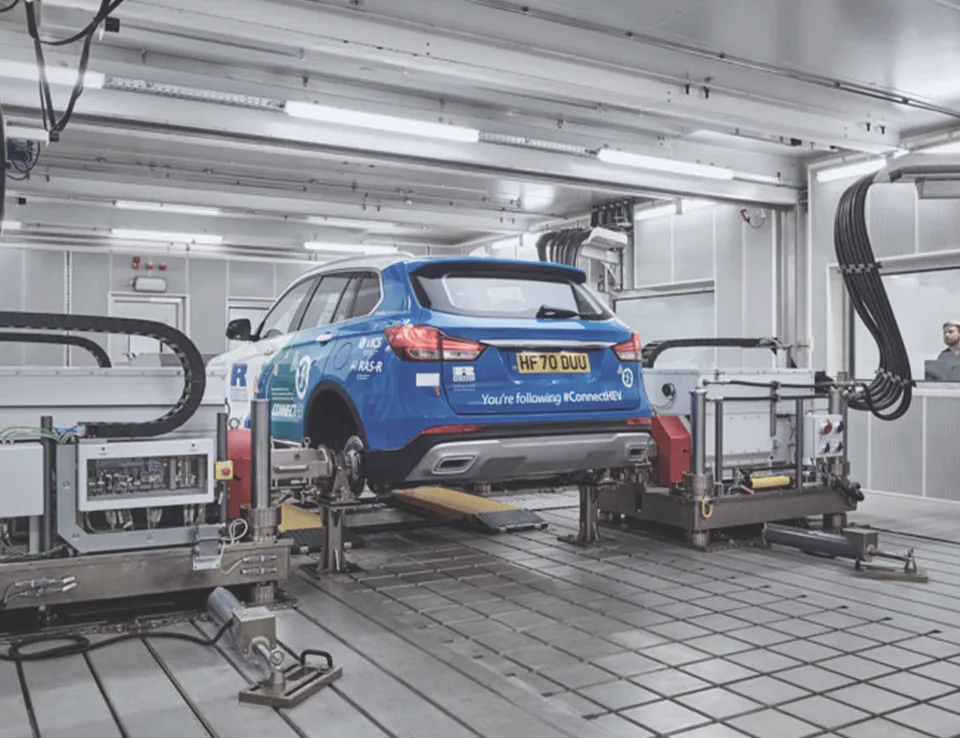Designing and implementing useful applications for air quality sensors
In our previous blogs, we’ve established that a robust QA/QC process to manage measurement uncertainty and optimise data quality is vital in understanding how good your data is and determining if you can actually use it for anything meaningful.
So, assuming that you’ve bought a batch of sensor systems, are following a vigorous QA/QC process and are itching to get them deployed, the next pertinent question becomes: How and where can you deploy your sensor systems in the right way to yield the most value? And what applications can help improve your organisation’s understanding of local air quality issues?
Informed by many years of working with both suppliers and users to procure, review and assess different sensor systems, here’s our take on how best to design and implement useful applications of sensors:
- Use of sensors as an indicative screening tool. Sensors can be a very useful and reasonably cheap tool for Local Air Quality Management (LAQM), to identify potential air quality issues before deciding whether to invest in a more expensive and comprehensive reference kit. Use of sensors in this way would require co-location studies to demonstrate a correlation between the sensor measures and the reference data, to provide confidence in identifying air quality issues. Co-location studies have already proved successful in a number of studies, both as part of Defra grant funding programmes (e.g. South Bucks) and for subsequent local authority measurement campaigns.
- Creation of high density, hyperlocal networks. Sensor systems can be used to create high density networks to investigate and map local air pollution variations. Use of sensors in this way can enable users to effectively fill existing gaps in reference level datasets, providing a baseline from which to work from. A carefully designed QA/QC scheme is required to test that all sensors in the network behave identically so that any differences in recorded measurements between sensors can be considered genuine. There are a number of these high-density networks in operation throughout the UK.

- Diffusion tube network replacement. Many sensor systems are small in dimension, can be powered by solar panels and deployed in the same locations as diffusion tubes, making them an ideal option for diffusion tube network replacement. However, where they excel is that data readings from devices are immediately available following installation. In addition, measurements are of a high temporal resolution, enabling users to undertake diurnal and source analysis. Typically, they also require much less user intervention or site visits following setup. This type of application would follow similar processes to diffusion tube screening i.e. use of co-location testing of sensors with a reference location, followed by initial co-location of sensors with tubes and data processing. With the addition of good QA/QC, the results from this method of application would be comparable in quality to diffusion tubes.
- Inform public education on air pollution. Engaging with schools, academies and colleges to undertake monitoring with sensor systems can fulfil a number of local authority public engagement/education objectives. Sensors can be used to undertake school or community science projects, gather measurements in and around academic institutions to assess peak pollution episodes, differentiate concentrations at different location types and act as a teaching tool for aspiring computer programmers, scientists and engineers. Good examples of this type of work can be seen at www.ep-scotland.org.uk/clean-air-day/ and www.breathelondon.org.
- Provide data for Citizen Science projects. Sensor systems operated by neighbourhood groups, schools and concerned citizens can play an important role in filling ‘gaps’ in local air quality knowledge. This type of monitoring offers the potential to provide improved information on local air pollution for the benefit of vulnerable groups such as schools and healthcare centres. The data can be used to provide alerts and advice on times to avoid pollution exposure. For this type of application, absolute data quality is not critical. What is important is that the precision of sensor measurements with each other is good i.e. they would report the same measurements if co-located. This allows the user to make meaningful judgements about the differences between measurements in different locations. A good example of this in action can be seen on the maps.sensor.community website. The map makes use of Citizen Science monitoring station data from a selection of different sensor types. The comparability between locations is good and poor-quality data can usually be easily detected.
- Indoor monitoring. Sensor systems are well suited to measurement of indoor air quality, either for personal or workplace exposure. Depending on the application, systems can be used to assess pollution associated with specific activities (e.g. cooking, heating, smoking etc) or linked to ventilation systems, if carbon dioxide is included in the suite of pollutants monitored. Calibration for this type of application is less critical, provided that any network of systems is internally consistent and the application is not required to assess exposure to ambient limit values.

- Occupational Exposure monitoring. Managing the exposure of workplace employees to high pollution levels is covered under health and safety legislation that all employers in the UK must adhere to. Monitoring for Occupational Exposure is typically assessed against much higher concentration limits than normal ambient environments. Sensor systems work well for this type of application as they are well suited to assessing exposure to these higher limits.
- Industrial/construction monitoring. Sensor systems are ideal for assessing the impact of industrial and construction processes. They can be deployed in numbers at convenient locations and provide high time resolution datasets that can be used to identify pollution episodes in relation to specific process events. The data can be used to trigger alerts that can then be used to inform and implement appropriate mitigation or abatement strategies. Use of sensor systems for this purpose requires sensors to have close internal precision i.e. return consistent measurements. However, similar to public educational use, absolute accuracy is not necessarily required for this application. Rapid identification of high measurement periods is of more importance within this context. That being said, the suitability of the sensor for this type of application should be carefully considered. Not all particulate matter (PM) sensors are well suited to measure coarser particles which may be the major concern at construction and quarry sites.

- Feedback into traffic management systems. Sensor systems are ideal for providing traffic data feedback. As part of an integrated traffic management plan, sensor systems can help identify traffic pollution hotspots and the timing of peak pollution periods to help with management strategies. For use in this way, sensor systems need to be internally consistent to allow valid comparisons at different locations to be made.
- Mobile monitoring. Mobile measurement of air pollution can be split into two areas: personal exposure and in-/on-vehicle monitoring. Both methods present unique challenges which materially affect data quality. Personal exposure devices are extremely sensitive to small changes in environmental conditions and don’t always provide a reliable indication of actual pollution concentrations. In-/on-vehicle systems need to be carefully designed to minimise any impact from moving at higher speeds and operated to record measurements at least every few seconds to ensure good correlation with the location. They can also be influenced by proximity to exhaust emissions, which may compromise the representativeness of any measurements. For both scenarios, QA/QC is critical and needs to be fully comprehensive if any reliance on the results is to be made. However, it is possible to derive some useful information from mobile and personal exposure studies. The associated level of detail about actual personal exposure and identification of how pollution levels vary in both time and space via mobile monitoring is potentially a valuable alternative to existing fixed-location strategies that do not account for such variables. Scottish Government’s personal exposure study exemplifies this type of application. Yet, despite such uses there are additional uncertainties associated with sampling using a mobile sensor which means that data quality is not yet comparable, even to fixed-location sensor systems.

- Supporting air quality modelling/mapping. Lower cost sensor systems offer the potential to support the calibration of air quality models for annual air quality reporting where limited measurement data is available (e.g. PM or O3), and for now- or near real-time models. Data of suitable quality from sensors can be linked to rapid dispersion modelling systems to help predict or verify where elevated levels of pollution might be experienced. The combination of air quality modelling and measurements offers the potential to provide a key element of an optimised air quality management system i.e. a sensor network of optimal density and maximised cost-effectiveness. However, value from such systems requires transparency in the methods deployed and independent system evaluation to have confidence in monitoring data and modelling outputs.
- Bridging monitoring and modelling data visualisations. Sensor systems can be used in conjunction with dispersion modelling programmes to show, in near real-time, how modelled concentrations vary in fine detail. Ricardo's proprietary air quality dispersion modelling system, RapidAir®, uses sensor data in this way to model changes in pollution concentrations. Data from sensors, combined with reference measurement data, can be fed into a rapid dispersion model to predict where elevated pollution levels might be experienced. To work effectively, the size of the sensor network and suitable measurement locations would need to be carefully planned, along with thorough initial QA/QC of the sensors before deployment. Doing this would mean the results could be used to create maps of modelled or monitored pollution profiles to help users understand local air quality.

In summary, there are potentially many useful and ground-breaking applications for air quality sensors, given their relatively small size and often simplicity to deploy. However, there are also significant pitfalls to be aware of which can lead to completely misleading results if no care is taken in planning and implementing your project. At the very least, you need to understand the most suitable sensor for your needs, and apply appropriate QA/QC testing to control and quantify the accuracy and uncertainty of the large amounts of data which your study is going to deliver – in addition to deciding what you are going to do with it!
Could your organisation benefit from sensor data correction?
Ricardo routinely provides sensor manufacturers and users with technical evaluation, guidance and development support in terms of dataset management, quality assurance and quality control (QA/QC) and processing. For more information, visit our air quality measurements page.
For direct queries or to discuss how Ricardo could help your organisation improve the quality of its sensor data reporting, get in touch.










